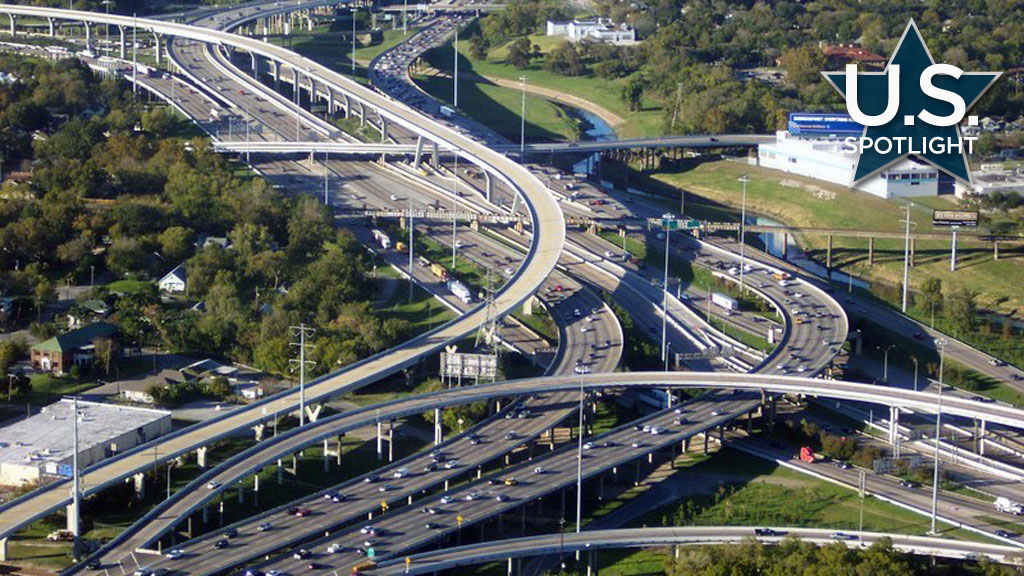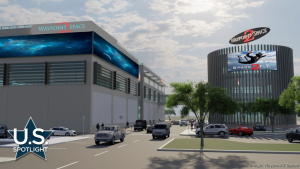A series of improvements to a main Houston traffic artery, I-45, regarded as one the most dangerous in the country, are now set to move ahead at an estimated construction cost of $9 billion.
In June 2023, the Federal Highway Administration (FHWA) sent a letter to the Texas Department of Transportation (TxDOT), applying pressure to move ahead with much-needed improvements on Interstate-45, a project that came to be known as the North Houston Highway Improvement Project (NHHIP). The FHWA provides stewardship over the construction, maintenance and preservation of the nation’s highways, bridges and tunnels.
Budgeted at $85 billion, the NHHIP is among several Texas road and highway improvements being considered over the next decade and forms part of an overall $120 billion investment in new transportation projects and maintenance.
The TxDOT had been looking at alternatives since 2011 to provide additional highway capacity in and out of downtown Houston. Study recommendations had suggested four additional managed lanes to the I-45 corridor.
The FWHA letter was, in fact, a reversal of its previous guidance. It had earlier told the TxDOT to pause the project due to ongoing civil rights and environmental issues raised during public meetings. However, construction is now expected to move ahead this year.
The proposed work on NHHIP will include re-routing, reconstruction, widening and expansion, and
will be divided into three sections, each with several further sub-sections, the TxDOT says.
“Our focus presently is on Segment 3, which will be the area that we move forward with first,” Raquelle Lewis, the southeast Texas communications director for TxDOT, told local media.
That portion of I-45 runs straight through the Houston downtown. Completion is expected in 2029.
Other Houston-area highway improvements include work on a two-mile section of the Interstate 10 as it approaches the I-45, in order to meet federal standards.
This will focus on raising the roadway above the floodplain level of the White Oak Bayou in order to prevent flooding that can make the route impassable after heavy rainfalls. A key part of this work will include the construction of a 25-acre pond built under the 10-lane roadway section to collect runoff water.
Public resistance to the NHHIP highway improvements had come from groups citing disruption to area neighborhoods, such as the blocking of local roads leading to schools, community facilities, places of employment and homes.
Having experienced similar serious disruptions in decades past, these groups were seeking meaningful dialogue and input into any proposal to widened or re-route the major roadways which pass close to their neighborhoods.
These concerns were taken up by the FHWA.
The resultant period of public comment led to design changes to the I-10 and I-45 reconstruction and the signing of a Voluntary Resolution Agreement (VRA) giving the project a greenlight.
Under the VRA, the NHHIP is allowed to go forward, alongside measures addressing the project’s impacts on the area communities. It provides clear enforceable timelines to be monitored by FHWA, the TxDOT said.
These include, “detailed design, stakeholder engagement, affordable housing initiatives, right-of-way acquisition, flood mitigation, and construction activities.”
One of the design elements agreed to under the VRA that could benefit the affected neighbourhoods is improved mobility on I-45 between US 59/I-69 and Beltway 8 North “to accommodate projected population growth and latent demand in the project area.”
Other improvements include, “increased modal options through four non-tolled managed lanes, bicycle and pedestrian features along frontage roads and cross streets, and trails parallel to bayous within the right of way,” the TxDOT said in a media release, as well as expanded transit and carpool opportunities.
“Air quality will also benefit from less congested traffic and idling cars along with various project mitigations.”
At $2.5 trillion, Texas is an economic powerhouse, the eighth largest economy in the world after France. The I-10 and I-45 act as key transportation arteries, not just for Houston commuters but for all of Texas and the country. The value of commercial goods travelling the I-10 alone is estimated to be over $130 billion each year. The routes’ importance are reflected in the amount of federal support for the development and improvement of the state’s transportation infrastructure.
The federal government had already announced $10.7 billion for Texas roads, bridges, roadway safety and major projects, the White House said in a previous media release.
This included $10.4 billion in highway formula funding and $230.7 million in dedicated formula funding for bridges in 2022 and 2023. Texas had already been awarded $3.3 billion, the most of any state, as part of the Infrastructure and Jobs Act passed in 2021.











Recent Comments